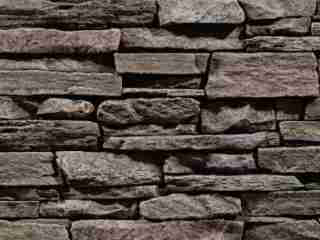 Fiberglass Reinforced Plastics FRP - Handling, Repair & Hazard Information
Fiberglass Reinforced Plastics FRP - Handling, Repair & Hazard Information
- POST a QUESTION or COMMENT about fiberglass dust, particle, & mold hazards in buildings
Fiberglass-reinforced plastics: cutting hazards and other MSDS information: this article describes possible health hazards when working with fiberglass-reinforced plastic products and materials. Our page top photo illustrates a fiberglass-reinforced lightweight Bell™ Canoe in use in the Quetico wilderness.
Fiberglass hazards in buildings: this article series provides information about how to identify fiberglass insulation in buildings and fiberglass hazards and fiberglass insulation contamination issues in residential and light-commercial buildings.
The fiberglass research literature is replete with studies indicating that there are no health hazards associated with airborne fiberglass particles, and with other studies reaching quite the opposite conclusion. We recommend that readers examine carefully the methodology used in such studies, the expertise of the researchers, and the sources financing of such work.
InspectAPedia tolerates no conflicts of interest. We have no relationship with advertisers, products, or services discussed at this website.
- Daniel Friedman, Publisher/Editor/Author - See WHO ARE WE?
FRP Fiberglass Reinforced Plastic Products MSDS Material Safety Data Sheet Data
Reader Question: What are the potential hazards from dust created by cutting fiberglass reinforced plastic panels & what cleanup is suggested
 I'm covering a new fireplace with faux-stone decorative panels made of fibreglass reinforced plastics (polyester resin + fiberglass + marble dust) and last Tuesday a panel was cut in the home (the others were generally cut outdoors). Since then my family and I have been living with thick dust 24 hours a day.
I'm covering a new fireplace with faux-stone decorative panels made of fibreglass reinforced plastics (polyester resin + fiberglass + marble dust) and last Tuesday a panel was cut in the home (the others were generally cut outdoors). Since then my family and I have been living with thick dust 24 hours a day.
Photo at left adapted from an image of fiberglass reinforced and very realistic faux-stone panel, available from Texture Plus (www.textureplus.com) [1].
I am pregnant and have two children aged 7 and 2 (the two-year-old boy now has cough and red eyes, and I have too in a milder way). I have tried to dust and clean the floor in the ordinary way but I'm not sure that's enough. Is this situation dangerous for my family?
What can I do to definitely get rid of this dust? Do you think the FRP fireplace covering will cause health problems in the future once finished (considering the fact that it will be subject to heating)? - R.S. 10/19/2012, Italy
Reply: cleanup suggestions for FRP cutting dust or any other fine particulates
R.S.
Even without onsite testing, I agree that in general, exposure to high levels of almost any sort of dust, especially dust containing fine particulates, would be a respiratory irritant and at very high exposures or at chronic exposures is a potential health concern.
Large particles of plastic or fiberglass are typically not inhaled deeply into lungs, and as you'll read at our fiberglass hazards articles at InspectAPedia, are asserted by at least some studies as not a great hazard.
But fine particulates can be more of a concern, and also fine particulates are not as easily cleaned or removed by ordinary housecleaning.
If a fiberglass reinforced plastic panel was cut inside your home and appeared to produce a lot of dust, I suggest that rather than spending the $1500. U.S. or so that would be the cost of a truly competent and reliable and thorough building inspection and testing, spend your time and money and effort on a thorough, or if you prefer, professional cleaning of the home, including areas more distant from the cutting source but to which small or fine dust particles may have traveled.
Where to clean up FRP dust
Just which areas need additional cleaning really depends on how far the cutting dust spread through the building - by direct air transport or potentially by movement through a warm air heat or cool air conditioning system if such were in operation and not well filtered. Certainly remote building areas closed off by doorways or other means during this problem are not as likely to have high levels of this irritating dust.
How to clean up FRP dust
This cleanup typically involves HEPA vacuuming and damp wiping of all indoor surfaces and contents sufficient to remove most of the irritating dust. If there is central air conditioning or heating, it might be appropriate to clean the ductwork (if it can be cleaned without damage) and air handler as well as of course changing the air filters.
Are there health concerns from FRP dust exposure?
Here is what Texture Plus says about their faux stone, brick, bamboo, etc. FRP panels:
Texture Plus® is completely safe for both children and adults. There is no Material Safety Data Sheet (MSDS) required with our simulated siding. Additionally, our panels are produced with all water-based chemistry, with no VOC and do not “off gas” any formaldehyde. [1]
Fiberglass Reinforced Plastic products are in the chemical family of Polymerized Thermoset Polyesters [2], of which some manufacturers such as Formglas do indeed provide MSDS data. Formglas agrees that their products are not hazardous in normal use, stating:
These products are sold as “manufactured articles” and do not represent a hazard under normal use - see Section 15, Regulatory Information. Hazards listed are associated with modifications made to the manufactured articles. Exposure to dust from cutting, grinding or otherwise altering these products may irritate the skin, eyes, nose, throat or upper respiratory tract. [2]
Here are explicit details from the Formglas product MSDS
Inhalation: Breathing dust generated from machining this product or handling may cause nose, throat or lung irritation including coughing or choking depending on the degree of exposure. [2]
Eye Contact: Eye contact with airborne dust may cause immediate or delayed irritation or inflamation. Eye exposure may require immediate first aid treatment and medical attention to prevent damage to the eye. [2]
In sum, the industry does not indicate signifiant healt concerns associated with working with FRP produts. Beyond cleaning, questions about persistent respiratory or health worries are a matter you should discuss with your physician.
Look for the MSDS for the specific FRP product that you are using
For more detail you can take a further look at the FRP additional example MSDS (material data safety sheet examples below - or better, obtain the product name for the specific FRP that was cut inside your home and thus you can obtain from the manufacturer the MSDS for that specific product). In the typical example MSDSs that we surveyed to research your question, the data asserts that about inhalation the MSDS states
Inhalation: Not considered a problem under normal use. Dust generated during machining can cause short-term irritation of the mouth, nose, throat or upper respiratory tract.
Eye contact: Not considered a problem under normal use. Contact with dust generated during machining can cause short-term irritation.
Skin contact: Not considered a problem under normal use. Contact with dust generated during machining can cause skin irritation.
Note further that depending on the fiberglass reinforced plastic product involved, there may be trace levels of formaldehyde present during machining or cutting - see the second MSDS we cite below.
Do keep me posted on how things progress, as what we learn may assist other readers.
If you haven't seen these articles, take a look
and FIBERGLASS DETECTION in BUILDING AIR & DUST
I'd welcome further questions that those articles may suggest to you or if that material is unclear...
Just below we include FRP Fiberglass Reinforced Plastic Products MSDS Material Safety Data Sheet Data
Fiberglass Reinforced Plastic Product FRP MSDS Information Details

Fiberglass Reinforced Plastic Product MSDS Information can also give some insight to potential health hazards as well as the contents of those products. Here are a few examples of FRP MSDS sheets:
Our photo (left) illustrates two ultra-lightweight canoes in use in the Quetico wilderness. The left-most canoe is a 17-foot fiberglass-reinforced canoe while the right-most canoe is a 17-foot canoe made of resin reinforced kevlar.
Both of these canoes offer very light weight and strong service, but both also need to be protected from sidewall damage by impact on sharp rocks. We carried duct tape for emergency repairs but have never needed to use it. - Ed.
- "Fiberglass Reinforced Plastic (FRP)[PDF file]", Panolam Industries International Inc.
325 DeSoto Avenue
Morristown, TN 37816
(423) 587-1842, [1]
Quoting: Panolam FRP panels are solid sheets which are composed of fiberglass, inorganic fillers, pigments and other additives that are embedded in a cured unsaturated polyester resin.
These panels are considered as “articles” as defined in the OSHA Hazard Communication standard in 29 CFR 1910.1200 (c) and are not considered hazardous under normal use.
Fabricating, machining, etc. may produce dust, which should be controlled subject to the OSHA standards for particulate exposure as included below:
FRP Fiberglass Reinforced Plastic Product Dust Control Standards [1] |
||
|---|---|---|
| Chemical Component | OSHA PELs (Permissible Exposure Limits for the workplace) | ACGIH TLV's (Threshold Limit Values) |
| Particulate dust | TWA: 15.0 mg/m3 (total dust) | TWA: 5.0 mg/m3 (inhalable fraction) |
| Particulate dust | TWA: 5.0 mg/m3 (respirable fraction) | TWA: 1 fiber/cm3 (respirable fraction) |
Notes to the table above
- ACCULAM™ MELAGLAS [PDF] trade name "NEMA Grades G5/G9", Accurate Plastics, Inc.
18 Morris Place
Yonkers, NY 10705-1929, Tel: 914-476-0700, Composition: Fiberglass & Melamine/formaldehyde Resin, [2],
Quoting from that MSDS, Dust generated during grinding, cutting, or drilling fiber glass reinforced plastic produces respirable fiber shaped plastic (organic) particles which has an OSHA PEL of 5 mg/m3 and nonrespirable fibrous glass dust regulated by OSHA as noted above
Trace amounts (<0.05%) of formaldehyde may be present as an unreacted polymer precursor which may be released during machining operations as a co-contaminant with the dust.
Formaldehyde has an OSHA PEL of 0.75 ppm
FRP Fiberglass Reinforced Plastic Product Composition & Dust Control Standards [2] |
||
|---|---|---|
| Chemical Name | OSHA PEL, TWA | ACGIH Exposure limit TLV, TWA |
| Fiberglass Continuous Filament |
15 mg/m3 (total dust) 5 mg/m3 (respirable) |
10 mg/m3 (dust) |
| Melamine/formaldehyde Resin | n/a | |
Notes to the TableAbove:
Dust generated during grinding, cutting, or drilling fiber glass reinforced plastic produces respirable fiber shaped plastic (organic) particles which has an OSHA PEL of 5 mg/m3 and nonrespirable fibrous glass dust regulated by OSHA as noted above.
Trace amounts (<0.05%) of formaldehyde may be present as an unreacted polymer precursor which may be released during machining operations as a co-contaminant with the dust. Formaldehyde has an OSHA PEL of 0.75 ppm.
FRP Fiberglass Reinforced Plastic Product Composition & Dust Hazards Identification |
||
Dust generated during machining and grinding operations may cause skin and/or eye irritation. Fumes from thermal decomposition or burning may irritate eyes, nose, and throat. Minimize operator exposure to dust and fumes. |
||
| Inhalation | Inhalation of dust during machining and grinding operations may cause moderate irritation to mucous membranes and coughing | |
| Skin | Contact with dust may cause moderate skin irritation. | |
| Eyes | Contact with dust may cause moderate eye irritation, itching and redness. | |
| Ingestion | Not determined; | |
| Cancer | OSHA: N/A IARC: N/A NTP: N/A There are trace quantities of formaldehyde contained in the resin matrix. Formaldehyde is a Human Carcinogen according to IARC and classified as Reasonably Anticipated To Be a Human Carcinogen by NTP. |
|
| Chronic | Dust generated during grinding, cutting, or drilling fiber glass reinforced plastic contains respirable fiber shaped plastic (organic) particles and nonrespirable fibrous glass dust. Prolonged inhalation of dust can produce lung disease. |
|
...
Continue reading at FIBERGLASS HAZARDS or select a topic from the closely-related articles below, or see the complete ARTICLE INDEX.
Or see these
Recommended Articles
- FIBERGLASS DETECTION in BUILDING AIR & DUST
- FIBERGLASS FRAGMENT HAZARDS in AIR or DUST
- FIBERGLASS HAZARDS - home
- FORMALDEHYDE in FIBERGLASS INSULATION
- FORMALDEHYDE GAS SOURCES in BUILDINGS
Suggested citation for this web page
FIBERGLASS REINFORCED PLASTICS at InspectApedia.com - online encyclopedia of building & environmental inspection, testing, diagnosis, repair, & problem prevention advice.
Or see this
INDEX to RELATED ARTICLES: ARTICLE INDEX to FIBERGLASS HAZARDS
Or use the SEARCH BOX found below to Ask a Question or Search InspectApedia
Ask a Question or Search InspectApedia
Try the search box just below, or if you prefer, post a question or comment in the Comments box below and we will respond promptly.
Search the InspectApedia website
Note: appearance of your Comment below may be delayed: if your comment contains an image, photograph, web link, or text that looks to the software as if it might be a web link, your posting will appear after it has been approved by a moderator. Apologies for the delay.
Only one image can be added per comment but you can post as many comments, and therefore images, as you like.
You will not receive a notification when a response to your question has been posted.
Please bookmark this page to make it easy for you to check back for our response.
IF above you see "Comment Form is loading comments..." then COMMENT BOX - countable.ca / bawkbox.com IS NOT WORKING.
In any case you are welcome to send an email directly to us at InspectApedia.com at editor@inspectApedia.com
We'll reply to you directly. Please help us help you by noting, in your email, the URL of the InspectApedia page where you wanted to comment.
Citations & References
In addition to any citations in the article above, a full list is available on request.
- Canter, Environmental Protoection. "ASSESSMENT OF VOC EMISSIONS FROM FIBERGLASS BOAT-MANUFACTURING." [PDF], U.S. EPA, EPA-600/2-90-019, May 1990.
- [1] Texture Plus >®, 1611 Lakeland Avenue Bohemia, NY 11716, USA Phone: 631.218.9200Toll Free: 800.863.8468 Fax: 631.218.9219, website: http://www.textureplus.com, Email: info@textureplus.com, Web: www.textureplus.com - Retrieved 10/4/2013, original source: http://www.textureplus.com/ledgestone-select-interlock.html
Texture Plus provides a variety of fauux brick, stone, wood, bamboo and metal panels made from fiberglass reinforced plastics. "All Texture Plus panels are 2’ x 4’ sheets of high-density molded polymer" - [2] Formglas Products Ltd., "Material Data Sheet MSDS for Formglas® FRP", Formglas Products Ltd. 2 Champagne Drive, Toronto, Ontario CANADA M3J 2C5, Tel: (416) 635-8030 Fax: (416) 635-6588 www.formglas.com, retrieved 10/4/2013, original source: http://www.formglas.com/pdfs/MSDS/Formglas%20FRP%20MSDS%202011.pdf
- [3] Crane Composites, Ltd., MSDS for Crane Composites FRP products (unless otherwise noted in the MSDS) retrieved 10/4/13, original source: http://www.cranecomposites.com/_pdfs/MSDS%20-%20Crane%20Composites%20FRP%20Products.pdf
- Our recommended books about building & mechanical systems design, inspection, problem diagnosis, and repair, and about indoor environment and IAQ testing, diagnosis, and cleanup are at the InspectAPedia Bookstore. Also see our Book Reviews - InspectAPedia.
- In addition to citations & references found in this article, see the research citations given at the end of the related articles found at our suggested
CONTINUE READING or RECOMMENDED ARTICLES.
- Carson, Dunlop & Associates Ltd., 120 Carlton Street Suite 407, Toronto ON M5A 4K2. Tel: (416) 964-9415 1-800-268-7070 Email: info@carsondunlop.com. Alan Carson is a past president of ASHI, the American Society of Home Inspectors.
Thanks to Alan Carson and Bob Dunlop, for permission for InspectAPedia to use text excerpts from The HOME REFERENCE BOOK - the Encyclopedia of Homes and to use illustrations from The ILLUSTRATED HOME .
Carson Dunlop Associates provides extensive home inspection education and report writing material. In gratitude we provide links to tsome Carson Dunlop Associates products and services.

